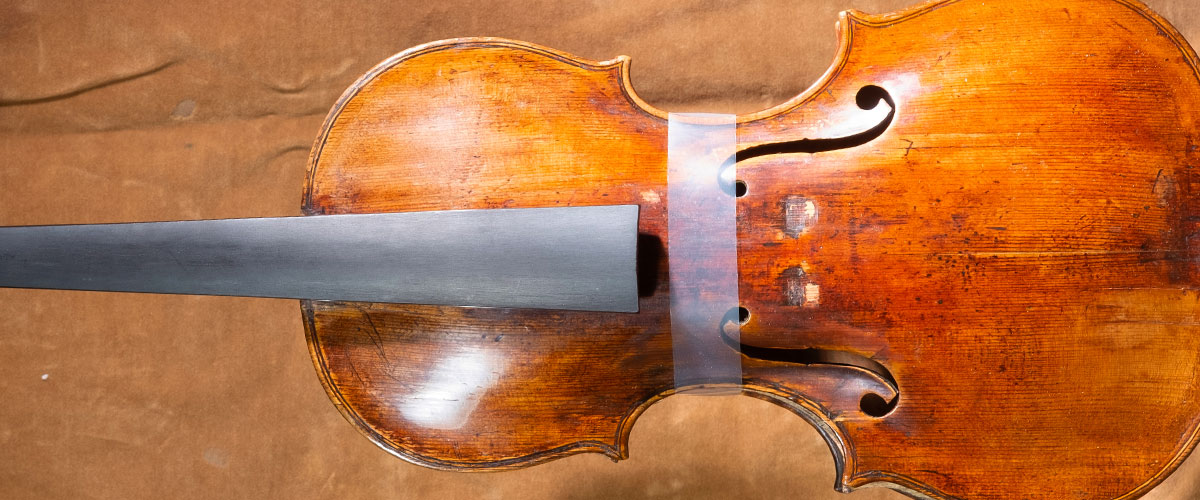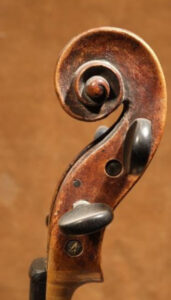Questions about Violins of Hope?
Email us at gh@jccchicago.org or call 847.763.3507.
This is a story of a miraculous violin that was buried under the snow, traveled to Palestine, then to Switzerland, Italy and returned to Israel.
Heinrich Herrmann grew up in Schwabach and Nirenberg, in the south of Germany where he learned to play the violin. He studied law and became a known judge, but not for long. Following the Nazi Nirenberg laws segregating Jews, he lost his position and soon moved to Holland. In Amsterdam he became a sales agent of typing machines for Hermes and Mercedes. More importantly, he met and married Ilse.

Heinrich clung to his old, rather inexpensive Gypsy violin and often played chamber music with friends. In the mornings he tried to secure a visa to Cuba or any other country that would grant him and Ilse a chance to leave Europe. With this plan in mind, he used all his savings to buy an expensive violin in a famous music shop on Spui street, Amsterdam. He bought a 150 year-old instrument hand-made in the very famous atelier of the Klotz family in Bavaria, Germany.
Heinrich thought that once he immigrated to Cuba, he could sell the extraordinary violin and support his family, start a new life. Not so easy. Soon all Jews in Holland were forced to register in the Nazi police and hand in all valuables. Heinrich brought his violin and told the clerk that he had no problem giving away all his valuables but had a hard time parting with the violin which was so dear to him. “Listen,” said the clerk, “go home with your violin and come back tomorrow with another. But don’t tell anyone I said so.” The Klotz was saved for now.
 The Herrmanns knew their life was in constant danger. They expected to be imprisoned any day, any minute, and asked a Dutch friend, Yan Molder to keep the violin. On June 23, 1943 they were imprisoned by German police, sent to Westerbrok where all Dutch Jews were incarcerated and soon sent in freight trains to Bergen-Belsen.
The Herrmanns knew their life was in constant danger. They expected to be imprisoned any day, any minute, and asked a Dutch friend, Yan Molder to keep the violin. On June 23, 1943 they were imprisoned by German police, sent to Westerbrok where all Dutch Jews were incarcerated and soon sent in freight trains to Bergen-Belsen.
In Amsterdam Yan Molder was afraid the Nazi police will find out that he held on to Jewish property and as he could not play the violin, he gave it for safe-keeping to a musician friend. This friend also feared the police and buried the violin in his garden. Under the ground and snow – it felt safe.
Another miracle happened to Heinrich and Ilse Herrmann. They survived the concentration camp and in 1944 were exchanged for German citizens who were expelled from British held Palestine, under the auspices of the Red Cross. It was the famous operation called: Train 222.
1945. World War Two was over. A year later the violin, now badly damaged, but “alive and so well” was brought to Heinrich in Palestine. It was repaired and soon Heinrich took it to visit his elderly mother who lived in Switzerland, where he played duets with his sister Lote, reminding his mother of the good old times before the Nazis, the war and destruction of Europe. On the way it was lost and found a few times but was always rescued and always close to Heinrich who played it for the next 40 years. A violin of miracles.